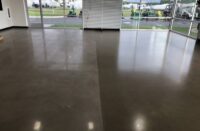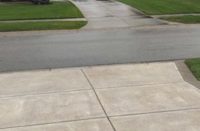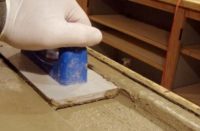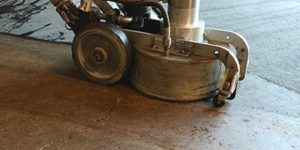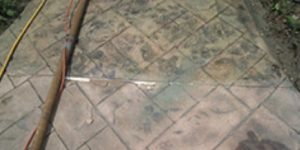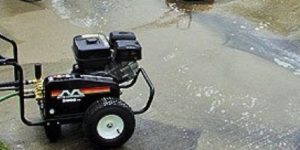Let me start off by saying I have never seen a response like we had from the Carlton’ Corner article “Solving Sealer Problems,”‘published in the February 2009 issue of Concrete Decor. Thanks to everyone who read as well as responded. The goal of this magazine and everything associated with it is to provide useful information that improves your business. When we receive dozens of e-mails commenting on a relevant issue like sealers, then we feel it’s time to revisit the subject.
I was pleased to get the green light from our editor to dive deeper into the warm-water pressure-washing method of removing old sealer. In fact, we went right to the warm-water well and interviewed Bryan Carr of Advanced Cleaning Solutions, in San Luis Obispo, Calif., and Visalia, Calif., asking him your questions word for word. Bryan seems to have found a way to make sense of a portion of our industry that keeps many up at night. I’m not sure if this is the fix-all of removing sealers, but it certainly has its place.
As you read the next few paragraphs, try to visualize how this method of cleaning and sealer removal could fit into your business. Some of you will take it to another level or direction, and this will be beneficial to all in the decorative concrete industry. Many of you already realize the big profit potential of resealing decorative concrete but know that new sealer will not cover old sealer. Some of it simply needs to be removed.
I started off with Bryan by asking how he got into hot-water cleaning. It seems he stumbled into it part time and quickly landed several accounts with city and county departments looking for ways to clean concrete. Word spread of his success, and these agencies passed his name from one department to the other. Bryan feels the right equipment is the key to building a trouble-free business, whether it is full time, part time or a branch business. The right equipment and setup can be expensive, and one should plan on investing $15,000 to $20,000 to get started. Renting equipment can be an option and should be considered as a way to test the water. Bryan recommends contacting one of the big rental chains, such as United Rentals, to see about renting a steam cleaner on a trailer. He recommends calling ahead and reserving one because it may need to be relocated from another branch.
Bryan said a typical crew is usually two people, with one helping with setup, breakdown and hose tending. His business is completely mobile by way of a 30-foot enclosed trailer that is fully self-contained, from hauling the water to reclaiming it. Many local and state laws require reclaiming or filtering wastewater before entering the storm drain. Bryan made it sound like being mobile was important because of the quick move-in, move-out nature of this type of business.
I asked Bryan if he could give us some insight on what it takes to actually remove a coat of sealer from concrete. He recommends starting with 2,000 psi and stepping it up to no more than 4,500 psi. The temperature of the water varies but is vital in this removal method. The hot pressurized water, usually more than 200 F, must be distributed via a surface machine (not a wand). High psi can slightly profile the concrete surface, so performing on a test area is recommended.
If multiple layers of sealer are involved, Bryan recommends treating the concrete surface with a solvent or chemical. Most jobs don’t require all the sealer to be removed, just the damaged sealer. Once these areas are treated, your concrete is ready for resealing. You will need to combine chemical and hot water treatments if complete sealer removal is necessary. Remember to use a shield to protect landscaped areas from steam and warm water. I realize the techniques that Bryan has shared have cost him many hours and dollars to develop. Thanks, Bryan.
Many of you e-mailed or called about difficulties finding someone in your area to outsource this work to. I didn’t realize this would be as difficult as it seems to be. I’m guessing many of you had a light go off in your head seeing the potential here. You may find this lack of availability frustrating, but please remember that we are in the infancy stage of this type of sealer removal. The ones that enter it and stick with it first will benefit the most. The demand for resealing and restoring existing decorative concrete will always be there, regardless of the economy. Concrete restoration may be the one thing that keeps your business in the profit zone this year. Not to mention, there’s how good your work will look for potential clients. Outsourcing to companies like Bryan’s has made perfect sense to my company because we have never profited by scrubbing dead sealer off concrete.
If you decide to try this method, please let me know how it works in your area. Every decorative contractor I know has struggled with what to do when good sealer goes bad. Solving this issue with a simple, fast and effective remedy will do more for our industry than anything else to date. Thanks again to Bryan, who can be reached at [email protected].
